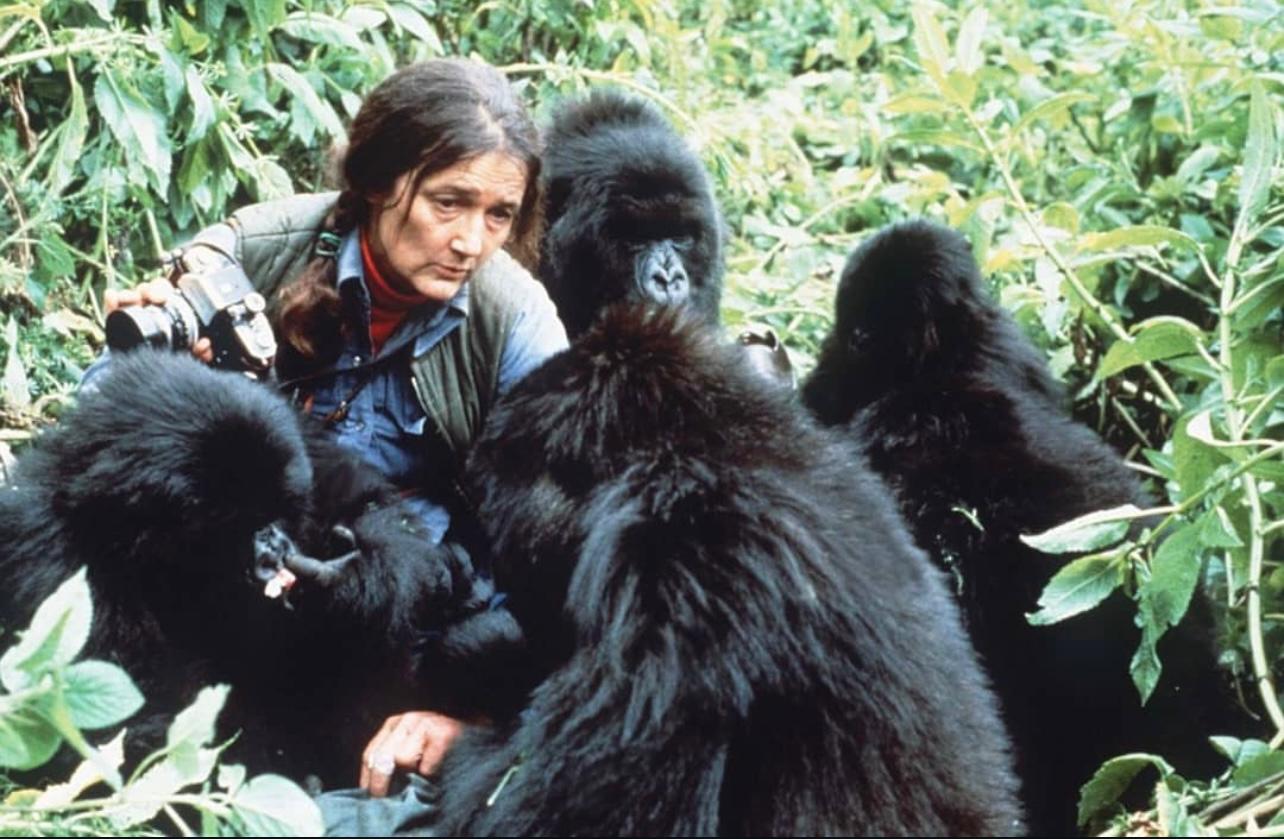Gorillas live in complex habitats that include many other important species, and the Dian Fossey Gorilla Fund has been actively monitoring and studying this biodiversity for two decades. Understanding more about important animals and plants in these forests is crucial to the survival of gorillas and for effective conservation overall. From golden monkeys to large mammals, amphibians, birds, insects, trees and other plants, our biodiversity studies are continuing to grow.
Most recently, we have partnered with the Singita Volcanoes National Park (SVNP) in Rwanda, to study the biodiversity on this landscape located next to Volcanoes National Park, home to the mountain gorillas. Singita has been supporting the long-term reforestation and ongoing natural regeneration of this property, with the aim of providing additional habitat for the gorillas. This aligns with the expansion plans of Rwanda’s Volcanoes National Park to extend the park boundaries into key buffer zones, increasing habitat for the growing mountain gorilla population as well as many other species. Singita was recently honored for its rewilding project here, as winner of the “Protecting the Planet” category of the Virtuoso Sustainable Leadership Awards.
The Fossey Fund’s work at Singita involves research and monitoring to track the restoration and rewilding of this property, including studies on many plant types, both naturally regenerated and native, evaluating their biomass, growth and health. Animal monitoring includes birds – with an emphasis on pollinators and seed dispersers – as well as amphibian surveys and mammal studies.
“We are excited to work in the Singita landscape because our collaborative research is part of a broader effort to understand the dynamic interplay between diverse species and their environment,” says Deogratias Tuyisingize, Ph.D., the Fossey Fund’s biodiversity research program manager.
The Singita landscape is located next to Volcanoes National Park in Rwanda
“Our projects at Singita provide a comprehensive picture of the status and recovery of biodiversity in the landscape. The data we collect informs conservation efforts and supports the protection of the key species – including the gorillas – that inhabit this unique landscape,” he adds.
“The Fossey Fund partnership is a critical collaboration for us to understand our role and guide our efforts in the ongoing active restoration and natural regeneration of the unique landscape adjacent to the Volcanoes National Park,” says Claudine Tuyishime, Singita conservation and community program manager.
“This is a property that was intensively used for farming for many decades, and to watch and document the recovery and resilience of its natural systems is so rewarding and inspiring, including the return of many forest animals, such as the endangered mountain gorillas. This property and partnership with the Fossey Fund plays a key part of Singita’s 100-year vision to protect and preserve large areas of African wilderness for future generations,” Tuyishime adds.
A LIVING LABORATORY
Our work in the Singita landscape not only contributes to the understanding of biodiversity but also serves as a living laboratory and an additional site for our educational and training opportunities, where students can work side by side with researchers, says Dr. Tuyisingize.
The Fossey Fund’s team – which includes our own staff as well as Rwandan university students in our internship program – has established permanent vegetation plots and transects across the SVNP property. More than 310 plants, both replanted and naturally regenerated, have been tagged and are under weekly monitoring animals and plants. Nearly 300,000 indigenous trees and shrubs have been planted here since 2019.
We also are using camera traps and passive acoustic devices to monitor wildlife, which are showing that a range of animals – including mountain gorillas, elephants, buffaloes, duikers, bushbuck, and carnivores like African serval and side-stripe jackal – have begun to make the Singita landscape their home.
Remote cameras are among the tools used to monitoring animals and plants
To date, we’ve documented over 60 unique bird species, with notables like the local Stuhlmann’s sunbird, Rwenzori nightjar, and migratory birds including the black cuckoo-shrike and barn swallow. We’ve also identified six distinct amphibian species, including the endangered Karisimbi tree frog.
The Singita landscape is also where students from the nature clubs that we support at local schools raised and planted 1,000 Hagenia tree seedlings last year as part of the reforestation efforts on the property, in partnership with the African Community and Conservation Foundation (ACCF) and additional partners. Hagenia is one of the dominant tree types in the gorilla habitat and its understory includes a lot of the food plants that gorillas rely on.







